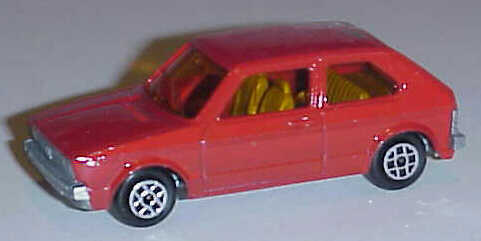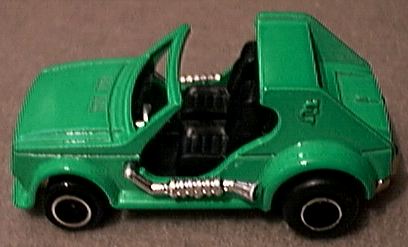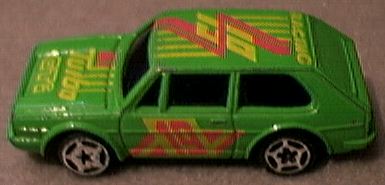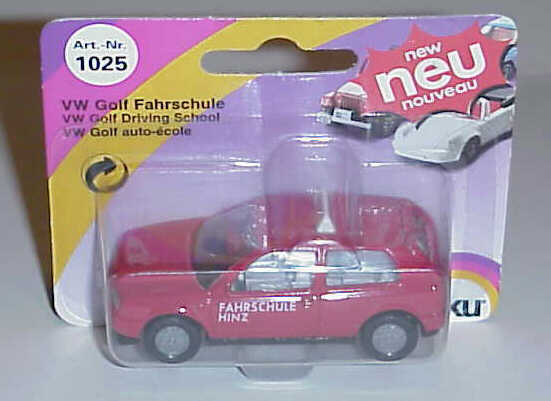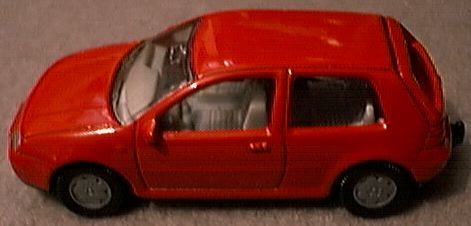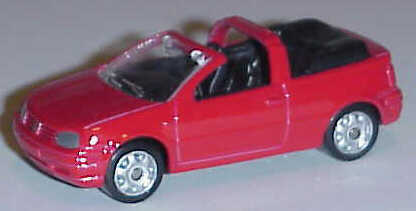by Brian Willoughby, images by Brian Willoughby and Doug Breithaupt |
By the late 1960's, Volkswagen was in an unusually precarious position in which both its unprecedented success and even its high standing within the automotive world were under attack. While still a well-engineered car with several more years of life left in it, the Type 1 (or Beetle) was, at its core, a pre-war design with relatively little development potential. Working with this basic chassis, Volkswagen had managed to stretch the design's versatility and create a few "re-clothed" Beetles with the Type 2 (known as the Microbus) and Type 3 (that was commonly called, at least in the U.S., the "Squareback"). Owing to its unique and practical nature and lack of meaningful competition, the Type 2 became certifiable hit; however, the Type 3, which was intended to supersede the Type 1, never found the market share that Wolfsburg had hoped for. With its engineers seemingly caught in a stranglehold by the air-cooled, rear-engined design, Volkswagen grew dangerously more moribund daily. The final vestige of the time-honored Volkswagen platform arrived with the poorly received (not to mention downright ugly) 411 of 1968. Expensive to develop and a flop from the beginning, the 411 and later 412 proved that the formula that had previously been so magical for the German giant needed an injection of some fresh new ingredients. During 1965, Volkswagen had acquired the Auto Union from Daimler-Benz and promptly began work on exterminating DKW, which, at the time, was Auto Union's only product line. To distance the company from the three-cylinder, two-cycle engined cars it had been producing, Volkswagen revived the name of one of the Auto Union's four members that had been phased out of production before World War 2 broke out: Audi. In killing off DKW and resurrecting Audi, Volkswagen's desire was to create a new, up-market line of cars that would compete directly with BMW as well as the Auto Union's former benefactor, Mercedes. Yet much more important in the greater scheme of things than gaining access to an untapped sector of the automotive marketplace, was the front-wheel-drive technology and expertise Volkswagen immediately gained access to through its takeover of the Auto Union. Eager to expand further and apparently believing that its bubble would never burst, Volkswagen absorbed another German car (and motorcycle) manufacturer into its empire during 1969: that company was NSU, the first car maker ever to place a Wankel rotary engine into series production. After first applying the rotary to small, rear-engined cars, NSU stunned the automotive world by installing a twin-rotor Wankel within its incredibly advanced, front-wheel-drive Ro80 of 1967. Unfortunately, the flagship Ro80's unproved and unreliable Wankel nearly bankrupted NSU; however, once again, Volkswagen ended up with, largely by default, some of the best and most advanced engineering that the automotive world had to offer during the late 1960's. Banking on the sure-fired success of the new Ro80, NSU had begun to develop a smaller, companion model for it. Assigned the designation of K70, too much had been invested in the car to abandon it and with the Volkswagen takeover, the former NSU K70 went into production with conventional, water-cooled piston engines as the front-wheel-drive Volkswagen K70. Despite being an insignificant car on most levels, the K70 was an immensely important model in Volkswagen's history since it represented Volkswagen's first ever departure away from the rear-engine design philosophy drawn up by Ferdinand Porsche so many years before. The car was even a modestly decent seller and clearly illuminated the path that Volkswagen would need to travel in the future if it planned to remain a viable auto manufacturer. Drawing on the front-wheel-drive designs it had inherited from the Auto Union and NSU, Volkswagen penned an extremely competent and all new car for the 1973 model year. Named the Passat (Dasher in the U.S.), the car was the first front-wheel-drive, water-cooled Volkswagen envisioned from the beginning as a thorough Wolfsburg product rather than one that had been captured and re-branded. Handsome and decidedly up-market compared to the Type 1 and 411, the Passat proved that Volkswagen had made the right choice about switching away from rear engines and air cooling. Yet the Passat was far too big and expensively priced to tread on the Beetle's domain, leading people to believe that the evergreen Type 1 would never be fully replaced. Nonetheless, the Passat allowed Volkswagen to test the waters and gauge how the car buying public would react to a very different car, then still under development, that was intended to be the Type 1's successor. That car, the Golf ("Rabbit" to Americans), was unveiled during 1974 by a very nervous Volkswagen. Replacing a legend is never easy and Volkswagen had a more difficult task than that ever faced by any other car maker except Ford when it discontinued the Model T in favor of the Model A. Yet as with the Ford Model A, the new Volkswagen Golf was so much more modern and even better looking (thanks to Ital Design's clean styling) than its predecessor, that sales of the Type 1 plummeted almost immediately after it made its debut. Eventually, the Type 1 would be completely phased out of production in Germany and in spite of continued manufacturing of the old rear-engined, air-cooled Beetle in Mexico, no one today doubts that the Golf handily took its place. The Golf reigns today as one of the best selling car lines of all time
and while it will probably not replace its famous ancestor in the record
books as the best selling car of all time, the Golf proved that Volkswagen
had more to offer than simply robustness and outdated cars sold through
clever advertising campaigns. A thoroughly modern design with infinite potential,
the Golf range has been increased to include not only the original hatchback
layout though also high performance variants (the GTi, Scirocco and Corrado)
convertibles, station wagons and even sedans (the Jetta is merely a Golf
with a trunk.) Furthermore, the much heralded New Beetle is based on the
current Golf IV's chassis. As might be expected after four generations of
Golfs, a lot of diecast miniatures of the cars have appeared from around
the world. Let's take a look at what has graced the toy store shelves over
the intervening years. As the first generation Golf was in production for 10 years, a considerable
number of diecast manufacturers offered miniatures of the hugely and deservedly
successful new Volkswagen. As might be expected, the German toymaking firms
of Schuco and Siku were among the first companies to produce diecast Golf
models. |
While most F-series models were predominately either prestige or sports cars, the Golf was a decidedly proletarian entrant within the range. Unfortunately, Tomica's typically superior ability to capture a vehicle accurately in miniature must have been on holiday when the tools for the Golf were designed: its proportions are awkward at best and it appears unnaturally wide and elongated, especially in the front clip, when compared to the actual car. Perhaps in recognition of Volkswagen's decision to open a Golf production
line in Pennsylvania, U.S.-based Mattel created a unique and fanciful miniature
of the car in full rally trim to include within its Hot Wheels range of
diecast toys. Well-received in England, Lesney offered a nicely proportioned four-door
Golf as a member of its Matchbox series.
Strangely absent, the only remaining German small scale diecast brand,
Siku, failed to offer a model of the second generation Golf. Overall, a
great reduction in the number of Golf miniatures occurred with the transition
to the new chassis and never again would such a variety of brands and models
the car be available. Nevertheless, at least two worthwhile examples of
the Golf II did enter production under the auspices of a couple of the big
players while a third, budget-price model appeared that is extremely challenging
to find today. |
Attesting to the popularity of the high-performance variant of the Golf,
Hot Wheels offered a well sculpted miniature rendition of the second-generation
GTi beginning in the mid-1980's. An unusual model that has to have an interesting story behind it, Welly's
Golf II seems to have begun life as a copy of Tomica's earlier Golf I. The Golf III
The Golf IV The only remaining small-scale diecast manufacturer in Germany, Siku
continues to satisfy its enviable niche market consisting of both youths
and adult collectors with some of the best made diecast cars and trucks
ever produced. Currently only available in the United States through private importers,
Majorette is, as always, producing a wide range of tempting miniatures that
has seen the introduction of several new castings during its absence from
the American market. After years of pirates and crude, low quality, lackluster miniatures,
Welly really managed to get everything together to produce a knock-out scale
model of the Golf IV. Also worth finding is Maisto's recent issue of a miniature Golf IV Cabriolet
that comes packaged along with a Jetta in a twin pack series that is currently
available at Wal-Mart stores. And here we conclude our review of miniature Golfs. Yet the Golf story is far from being over and collectors can undoubtedly expect to see more diecast models of the car for as long as it remains in production. Certainly, this rather amazing and remarkable car has to be one of the diecast world's most deserving topics. |







 English
production lines, the dies for this model were sent to Bulgaria where the
standard model continued to be made for several more years.
English
production lines, the dies for this model were sent to Bulgaria where the
standard model continued to be made for several more years.